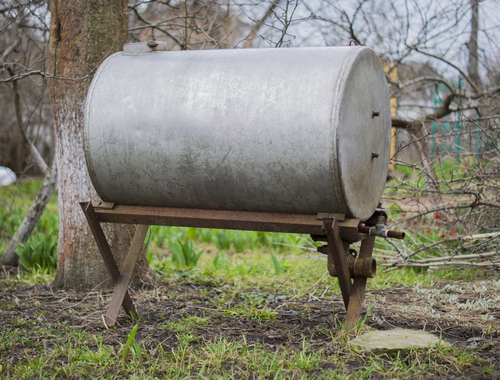After the Flood: UST Response Tips
 |
Floods can be devastating events, causing billions of dollars in damage. When USTs are impacted by flooding, the damage can include releases of a variety of UST contents into the environment, adding to the destruction and the costs for USTs’ owners and operators. When a UST has been in a flood, the U.S. Environmental Protection Agency (EPA) recommends a number of steps that may be taken (depending on the site) after the water has receded and local officials have given the green light to enter the site.
- Make sure the electricity is off to any UST-related equipment, including power to the dispensers, pumps, release detection equipment, and other devices.
- Determine if product leaked from the UST. One way to do this is to use the product inventory and water level readings taken before the flood, which can help to establish if a tank or tanks have lost contents. Follow notification procedures if a release is confirmed, including local, state, and federal requirements.
- Determine if water or debris entered the UST.
- Inspect the UST’s electrical system, and return power to the UST system.
- Check the release detection system for proper operation. Perform release detection again, as soon as possible after the flood. Use daily inventory control and monthly reconciliation if the electronic leak detection is not operating.
- Check that all equipment is operating properly, including pumps, shear valves, fill pipes, and vent lines.
- Clean and empty spill buckets and sumps, including those under the dispensers and above the tanks.
- Inspect all piping and fittings for damage and possible leaks.
- Perform a tightness test on the UST system to ensure integrity before adding any product.
- Test spill buckets and sumps to ensure they are tight.
- Test cathodic protection to ensure it is operating properly.
- Perform daily checks for water with water-finding paste for several days until the system is determined to be tight.
- Empty UST contents and stop using the UST if water checks indicate excessive water or daily inventory control shows loss of product.
Join us for our Underground Storage Tanks webinar December 18 and learn how existing federal requirements and regulations governing USTs could change. Learn more.
In the event that a UST has floated out of its excavation, the EPA says the following additional actions may be appropriate:
- Notify the appropriate local, state, and federal authorities if there is any evidence of spilled product from a UST. If a release is found to have reached surface water or shorelines, it must be reported to the National Response Center.
- Notify the local fire department.
- Turn off any power in the vicinity of the tanks and piping. If electrical lines are down in the vicinity, contact the electric company immediately.
- Rope off the area and keep people away from the area impacted by the UST.
- Remove all contents of the UST.
- Perform initial leak mitigation and release reporting, if necessary.
- Obtain a contractor to dismantle any piping and/or dispensers, and remove the piping and tank properly.
Underground Storage Tanks: How Proposed Regulations for 2015 Will Likely Impact Your Facility
Your UST compliance-based initiatives may need to change in light of anticipated EPA final regulations. Seats fill fast, so Register Now.
UST owners and operators should note that many states, municipalities, counties, and flood control districts have established specific requirements for managing USTs. These requirements must be at least as stringent as federal requirements, and many are more stringent because they are designed to address flooding problems unique to a specific area. To ensure the correct agencies and emergency management organizations are contacted after a flood event, always keep contact information updated, and ensure that qualified staff are well acquainted with procedures, plans, and regulations that apply.
